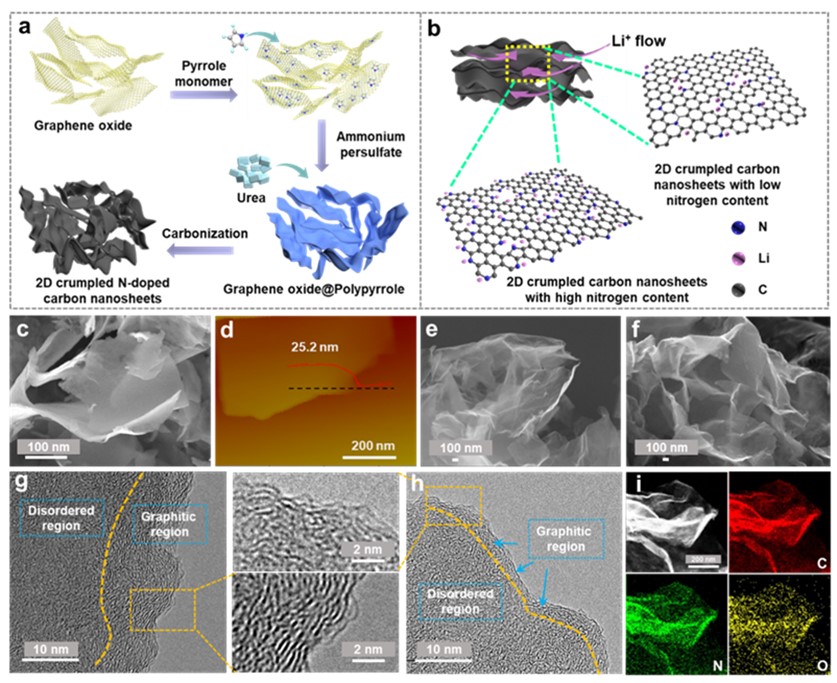F.Y. Liu ‡, T. Yu ‡, J.Q. Qin *, L.Z. Zhang, F. Zhou, X. Zhang, Y.W. Ma, F. Li * and Z.-S. Wu *
Journal of Materials Chemistry A, 2024, 17327.
DOI: 10.1039/D4TA02681K [PDF]

Li-ion capacitors (LICs) are promising to simultaneously achieve battery-level energy density and supercapacitor-level power density, but the slow kinetics of diffusion-controlled battery anodes lead to unmatched two-electrode kinetics at the device level. Herein, we report a capacitive-dominated anode of two-dimensional (2D) crumpled nitrogen-doped carbon nanosheets (N-CNS) with tailored nitrogen incorporation and abundant mesopore distribution, exhibiting large capacities and superior rate performance. The optimized N-CNS delivers large reversible capacities of 620 and 121 mAh g–1 at 0.1 and 100 A g–1, respectively. The introduced nitrogen is found to contribute to providing additional pseudocapacity and high Li+ diffusion coefficients in the medium-high voltage region and enhancing the capacitive-dominated charge storage process. The structural reversibility and “adsorption-intercalation” mechanism are supported by in-situ and ex-situ measurements. Furthermore, it is theoretically revealed that N-CNS with superior electrochemical properties benefits from the increase in Li+ adsorption energy and the decline in Li+ diffusion barrier. A LIC coupling the N-CNS anode with a porous carbon cathode outputs a high energy density of 75 Wh kg–1 at an ultrahigh power density of 65 kW kg–1. This study provides a novel and effective approach to developing high-performance carbon-based anodes for constructing advanced LICs featuring high energy and power density.